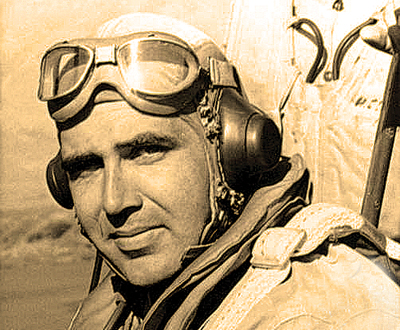INDIAN ARMED FORCES CHIEFS ON OUR RELENTLESS AND FOCUSED PUBLISHING EFFORTS

The insightful articles, inspiring narrations and analytical perspectives presented by the Editorial Team, establish an alluring connect with the reader. My compliments and best wishes to SP Guide Publications.

"Over the past 60 years, the growth of SP Guide Publications has mirrored the rising stature of Indian Navy. Its well-researched and informative magazines on Defence and Aerospace sector have served to shape an educated opinion of our military personnel, policy makers and the public alike. I wish SP's Publication team continued success, fair winds and following seas in all future endeavour!"

Since, its inception in 1964, SP Guide Publications has consistently demonstrated commitment to high-quality journalism in the aerospace and defence sectors, earning a well-deserved reputation as Asia's largest media house in this domain. I wish SP Guide Publications continued success in its pursuit of excellence.
Edward O’Hare (1914 - 1943)
Edward “Butch” O’Hare was born in St Louis on March 13, 1914 and later became the United States Navy’s first fighter ace of World War II

Many airports around the world are named after eminent persons; but people from other countries are often ignorant about the person so honoured. For instance, how many travellers landing at Chicago O’Hare International Airport, one of the world’s busiest, might know who O’Hare was? Well, Lieutenant Commander Edward “Butch” O’Hare never lived in Chicago. He was born in St Louis on March 13, 1914 and later became the United States Navy’s first fighter ace of World War II. Butch’s father, Edward Joseph O’Hare, was a lawyer who worked closely with Al Capone – America’s most notorious gangster – in Chicago. Eventually he was ruthlessly gunned down, probably by Al Capone’s thugs, because he provided incriminating evidence that helped convict Capone of tax evasion.
Butch O’Hare entered the Western Military Academy at the age 13. He had a rare talent for marksmanship and became President of the rifle club. In 1933, he joined the United States (US) Naval Academy at Annapolis. Following his graduation, he served for two years on a battleship before undergoing naval flight training and was then assigned to Fighter Squadron Three. The Squadron was initially aboard the aircraft carrier USS Saratoga; but was then transferred to various other carriers. In February 1942, it was on the USS Lexington operating the Grumman F4F Wildcat fighter, when O’Hare’s most famous mission occurred.
The Japanese had stormed ashore at Rabaul, Papua New Guinea, a month earlier and the USS Lexington was charged with conducting air strikes against the Japanese ships anchored at Rabaul. However, the Lexington was spotted by a giant four-engine Kawanishi Flying boat and although the spy plane was soon shot down, it had already reported the location of the US carrier to its base. The Japanese immediately dispatched a wave of nine Mitsubishi G4M “Betty” land-based bombers armed with bombs and torpedoes against the Lexington. Six Wildcat fighters were launched from the carrier and between them and the ship’s anti-aircraft guns, they managed to eliminate all nine raiders before they could do any damage.
A second wave of nine Mitsubishi bombers was detected and another six Wildcats took off to intercept them. However, four Wildcats were too far away to prevent the deadly strike and only O’Hare and his wingman were within intercept distance. To make matters worse, even the wingman’s guns jammed. Now all that remained between the USS Lexington and the nine determined attackers was an equally determined Butch O’Hare. Amazingly, using this limited magazine judiciously and with great courage and skill, Butch managed to shoot down five of the bombers in four minutes, thus becoming “ace in a day”. Just as he was running out of ammunition, more US fighters entered the fray and succeeded in thwarting the attack.
Butch O’Hare was promoted to Lieutenant Commander and awarded America’s highest decoration, the Congressional Medal of Honour – the first naval aviator so recognised. The citation concluded, “As a result of his gallant action, one of the most daring, if not the most daring, single action in the history of combat aviation, he undoubtedly saved his carrier from serious damage.” The writer can be forgiven for exaggerating a little. America, still licking its wounds from the devastating Japanese attack on Pearl Harbour in December 1941, desperately needed a hero. And Butch O’Hare was a shining hero.
In August 1943, O’Hare was made air-group commander, overseeing three squadrons. By November 1943, the Americans dominated the skies during the day. The Japanese resorted to low-altitude night strikes with torpedo-armed Mitsubishi bombers against the aircraft carrier Enterprise and other American ships. The pilots on the Enterprise, now armed with new Grumman F6F Hellcat fighters, developed an effective countermeasure. Radar-equipped Avenger bombers would direct the more agile, but radar-less Hellcat fighters into position behind a bomber till they could spot its exhaust flame and then go in for the kill. However, this meant a number of friendly and hostile planes might be milling around in close proximity in the dark at low level. O’Hare was in the attack phase of one such interception mission on the night of November 26, 1943, when his aircraft disappeared. Neither aircraft nor pilot was ever found. O’Hare was declared dead a year later.
There was no clear answer as to whether Butch had been hit by a Japanese bomber or by friendly fire or had crashed into the sea. However, 54 years later, following a detailed investigation of historical records as well as interviews with survivors, two naval historians concluded that he had probably been brought down by a quick, lucky burst from a Mitsubishi. On September 19, 1949, Chicago airport was renamed O’Hare International Airport to honour Butch O’Hare.





